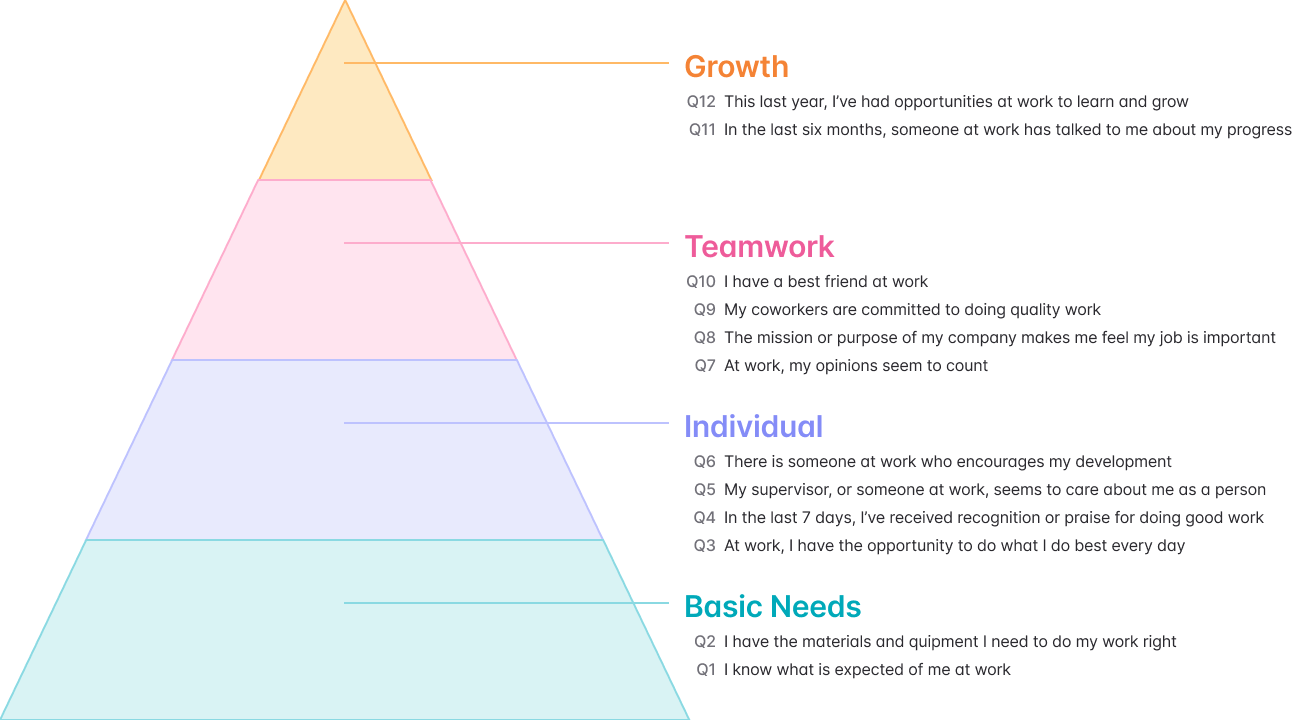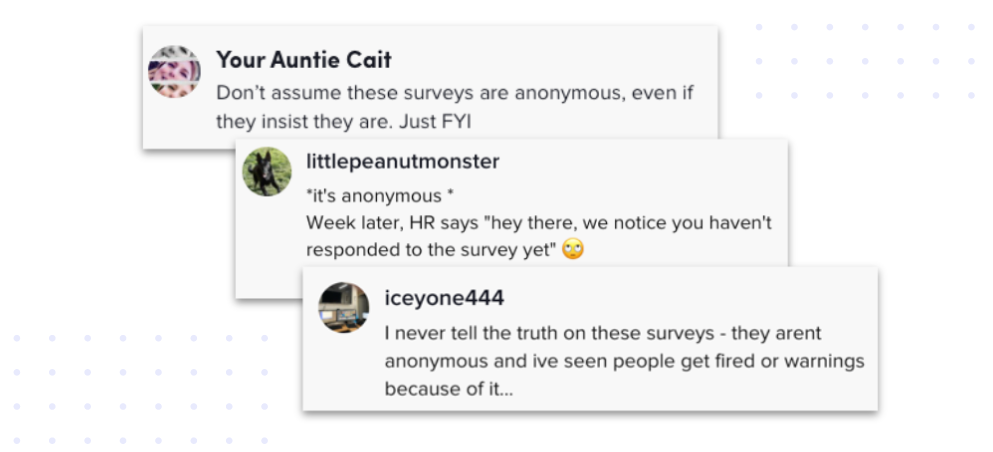Lack of efficient internal communication is costing U.S. organizations $2 trillion per year in time and productivity.
How? Well, let’s imagine your company has announced a new policy for employees - a hybrid model, where you can work from home 2 days a week.
Woohoo.
But the HR department, responsible for disseminating information about the new hybrid model to employees, is still sending emails about in-office amenities. There's a lack of communication between HR and management and they’re not aware the policy has changed.
Result? Confusion and chaos in employees.
- Do you still work from home 2 days a week?
- If so, how do you communicate with the team remotely?
- Is there a rotating schedule for all employees?
This is why organizations need a good internal communication strategy in place.
In this article, we will discuss what internal communication is, why it is essential for businesses and how to create a highly effective and efficient internal communication strategy.
Excited? Let’s dive in.
What is Internal Communications?
Internal communication is how information is shared within the organization, from the top level hierarchy to the employees. This includes team collaboration, sharing important information among collaborators, fostering engagement and providing timely communication during crisis.
What is Good Internal Communication?
Good internal communication is having an open flow of communication in the organization. Everyone can convey their suggestions, their concerns and conduct healthy discussions with people higher up in the hierarchy with ease.
It is also the greatest tool for a healthy and productive work environment, which then helps the organization in achieving its goals.
6 Benefits of Effective and Efficient Internal Communications
Did you know over 80% of employees prefer working for organizations that prioritize open communication over those that only offer perks such as free meals and comprehensive health plans?
So we know that effective internal communications is important for attracting the right employees to your organization and keeping them happy, but what are some other benefits?
Let’s find out.
It helps to form a close-knit community
When employees feel like they belong to a place, they will not just work for it, they will truly invest themselves in what they do.
Studies show that high social belonging was linked to a whopping 56% increase in job performance, a 50% drop in turnover risk, and a 75% reduction in sick days.
When you encourage a close-knit community and a family-like work culture in your organization, employees will unite towards a common goal for the company rather than pursue personal or selfish reasons.
It makes employees feel heard and seen
Imagine, an employee is facing racial harassment from their fellow employees. Because of lack of internal comms, they can’t inform their manager of what they’re going through.
The top hierarchy has no idea what’s going on amidst employees.
The result? Terrible work culture, low productivity, low employee retention rates.
It is essential for the employees to know that their opinions, suggestions, or reservations are of value to the company and will be catered to by management.
Encouraging open dialogue alongside consistent employee rewards and recognition can strengthen trust and keep teams more connected to the company’s goals.
It increases employee engagement and productivity
The more an employee feels seen and heard, the more they’ll voice their opinions and suggestions, and the more effort they'll put in. Involvement and productivity rates will soar.
Studies have shown 72% of business leaders believe that effective communication has increased their team’s productivity.
The Harvard Business Review conducted an interesting case study and split people into teams and played a virtual ball-toss game.
Some teams felt included because they got the ball a lot, creating a positive social experience, while others felt left out as they got it only a few times. Later, they played a money-earning game as a team. Those who felt left out in the ball-toss game were less excited, worked less, and earned less money when they found out the earnings would be shared.
However, when told they could keep the money they earned, everyone worked equally hard, whether they felt included or not.
This shows that employee inclusion is very important for employee commitment and productivity and your organization’s profits may take a hit if employees do not feel included.
It keeps information flowing
Picture this: You come home from a long day at work to find your family all dressed up, and ready to go to dinner.
“But no one told me!”
“Must have slipped our minds. It’s no big deal, go and get ready, we’ll wait.”
How would you feel when asked to get ready for a dinner you didn’t know was happening?
Disgruntled, undervalued, under-appreciated, and feeling as though your family doesn’t really care about your presence or absence? This is exactly how employees feel when tidbits of information are kept from them or fail to reach them because of inadequate communication.
70% of employees state being undervalued and unappreciated as their reason for job dissatisfaction.
Keeping employees well-informed at all levels, and through the right channels, is essential for maintaining a positive team culture.
Conversely, it can also help to keep information from employees. A good internal communication policy ensures that employees are not burdened with information overload.
It allows quick response to crisis
How do you not let the feeling of abandonment creep up on employees? How do you assure them that the company stands by them in times of crisis - i.e., like when a project is going awry, a team member needs a medical leave at a crucial time, or when a pandemic like COVID hits out of nowhere?
With a good internal communication system.
Good organizations assist employees in navigating crises by having an open and effective internal comms system.
When COVID hit a couple of years back, there was panic everywhere.
With businesses shutting down left and right, and people losing their jobs, everyone was on the edge. Mental health and productivity levels were dropping with every passing day, organizations needed to come up with a solution - pronto.
And only institutions with excellent internal communication processes in place managed to survive.
One such company is Patagonia, an outdoor apparel brand, that had an excellent response to the pandemic.
The company established an open dialogue with its employees, did not cut salaries or lay off people, offered emotional support, and kept employees informed about company decisions, financial situations, and future plans through emails, town halls, and internal platforms.
It helps achieve organizational goals
Finally, the most important benefit of internal comms is the alignment and achievement of organizational goals.
Let’s assume your goal is to increase brand awareness.
The initial strategy was to increase brand awareness through influencer marketing, collaborations, and paid advertisement. As the results come in, you realize that your current strategies aren’t meeting your desired outcomes.
So now, a different set of strategies shall be employed, perhaps a mix of content and email marketing. Now they need to be clearly communicated to your marketing and sales team so everyone is aligned and working towards the right objectives.
Therefore, it’s essential to keep every employee in the loop about what is happening and what the next steps are; this is where the role of internal communication policy is the most crucial.
4 Core Goals of Internal Communications
Creating an internal communications strategy without having specific objectives in mind is like hitting in the dark - you may get positive results here and there, but not with sustained consistency.
The following are 4 key aims organizations should target when incorporating an efficient and effective internal communications strategy in their workplace. Establishing these aims will also help you determine the right type of internal communications strategy to use.
Engagement
You’ve realized engagement rates among employees are low and that is affecting their productivity, as well. Missed deadlines and diminished quality are two of the biggest problem areas you’ve identified.
Your goal is to increase employee engagement and thus productivity.
For that, you introduce internal communication trends for in-office and remote employees, both, like Slack for real time interaction and communication. You also decide to plan one-on-one meetings with your employees to encourage them to share their thoughts and establish channels for open dialogue, feedback, and suggestions from employees, aiming to improve their work experience.
Alignment
Keeping employees and the organizational objectives aligned together is an essential goal. It helps foster a culture of collaboration and teamwork, ensuring that every person is playing their part in reaching the company’s targets.
John Kotter, Harvard Business School professor, explains the concept of alignment within an organization and writes, “transformation is impossible unless hundreds or thousands of people are willing to help, often to the point of making short-term sacrifices.”
Educate
Did you know companies with comprehensive employee training programs have a whopping 218% higher income per employee than companies without formalized training?
Many companies seek better internal communication to convey training and skill developing opportunities to their employees. The more skilled your employees, the more the better results they get for the organization.
Community
When institutions start to think of internal communication the most important goal that comes to mind is fostering a sense of community within the organization.
5 Step Process to Build an Internal Communication Strategy
You’re looking to introduce a solid internal communication strategy at your organization.
What do you do? How do you create an effective internal communication strategy that improves your employees productivity, engagement, and helps achieve your organizational targets?
Here’s how.
Assess your current strategy and determine goals
Where does your company currently stand in terms of internal communication and where is it headed?
Do you have an internal communications process and plan in place?
Is it reaping the right results? Are employees and managers satisfied with it?
Do managers use a lot of industry jargon and terms while communicating with employees?
As Daniel Kahneman, Nobel prize–winning economist in Thinking, Fast and Slow, writes, “If you care about being thought credible and intelligent, do not use complex language where simpler language will do.”
Next ask yourself, what do you want to achieve with your internal communications strategy?
- More employee engagement?
- Better employee retention?
- A free-flow of innovative ideas and creative discussions?
Make a list of both short and long term objectives you’d like to achieve.
This is where you use surveys and conduct one-on-one meetings with your employees to understand where you’re lacking. Studying the company’s overall ambitions and targets offers will give you perspective.
You might find that collaborators are not very comfortable engaging via emails - they prefer video content to get their information, or receiving messages through internal communication apps like Slack to engage in real time. Or you might find out that managers are not conducting weekly/monthly one-on-one meetings with employees to hear their views, so you might need to change that.
Set SMART goals and objectives
Completed a thorough analysis of your current internal communications strategy and determined your targets? Now, it’s essential to transform them into SMART goals.
Goal: You want to improve employee engagement.
SMART goal:
- Specific: Your objectives need to be super specific.
Increase your employee training participation.
- Measurable: It should be measurable, allowing tracking through a specific metric.
Increase employee training participation by 30%.
- Attainable: This means that the goal should be realistic. It is good to aim high, but the goal should be within reach.
Ask collaborators when and how it’s most convenient for them to take these training programs.
- Relevant: The targets set should be relevant and aligned with the company's vision. The easiest way to determine whether your goal is relevant or not is to ask yourself, will achieving this goal make any impact on achieving the company’s larger aims? If not then perhaps you need to rethink this one.
Training programs contribute to employee’s development and turn them into assets for your business.
- Time-Bound: Give yourself a deadline to achieve them.
Increase employee training participation by 30% in 6 months.
Segment your audience
Once you’ve set your goals, start to segment your audience.
You can do it according to,
- their preferred way of communication,
- where they are in the organizational hierarchy, their department and job role,
- their work status (whether they’re remote employees, in-office, or hybrid),
- their location (especially if your organization is a global organization),
- and, lastly, their engagement levels.
Once you’ve grouped employees together based on their commonalities, it will be easier for you to tailor communication according to them. This results in delivering targeted and more relevant messages to employees, fostering higher engagement and job satisfaction.
Select the right communication channels and tools
Next, select your communication tools and channels.
This is where segmentation comes in handy. For instance, employees over 50 prefer communicating over email, while GenZs are more inclined towards instant messaging apps. Similarly, some groups might respond better to in-person meetings, while others may prefer email.
Amazon’s snack-sized communication strategy is a great example of knowing what your employees want and fine-tuning your strategy accordingly.
Amazon found out that their employees didn’t like wasting their time in long-winded meetings and text messages so they introduced two main strategies,
- 2 Pizza Rule: Limiting the number of meeting attendees to no more than can be fed by two pizzas
- 6 Page Memo: Keeping employees updated with 6 page narrative memos that operate on the principal of storytelling instead of boring powerpoints
So find out what your audience prefers and choose the right communication channels based on that.
Track important metrics
How do you check if your communication strategy is on the right track or not?
By closely monitoring essential metrics and KPIs. This helps you understand which communication channel is a particular segment responding best to, what needs to be changed, etc.
Your organizational aims are closely tied to the metrics and KPIs you track.
Some examples include,
Goal: Increase employee engagement
Metric to track: Employee engagement score
Goal: Improve communication reach
Metric to track: Message open rates (depending on the communication tools you’re using)
Goal: Boost employee satisfaction
Metric to track: Employee satisfaction score via surveys and one-to-one feedback
Goal: Improve time spent in responding to urgent situations
Metric to track: Message response time
Goal: Increase employee advocacy
Metric to track: Employee referral rates and employee participation in advocacy programs
Remember, a good internal communication strategy is dynamic and fluid, not rigid. So as you implement and monitor, improve methods that are working and remove what isn’t.
4 Internal Communication Tools You Should Invest In ASAP
There is no limit to the number of tools you can employ. Here we shall discuss three great internal communication tools. All these tools have their uses and can be used simultaneously together to create a robust internal communication strategy.
Newsletter
An internal newsletter, whether digital or a traditional magazine-style, is a great way of communicating with your collaborators. After all, 81% of B2B marketers say their most used form of content marketing is email newsletters.




